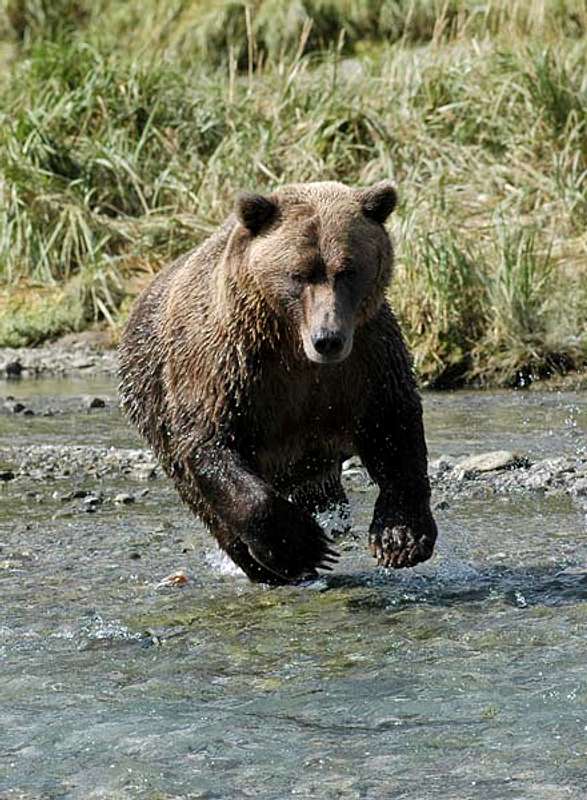
Dolphins have always been a mysterious marine animal that leave us awestruck owing to their beauty and intelligence. Among kids, who generally love animals, there is a deep sense of curiosity and desire to know more about this fascinating animal. Presented below are some Dolphin facts for kids.Dolphin Facts for ChildrenFor kids and students, often Dolphin facts are required for completing their school assignments. So, kids in case you're searching for some interesting Dolphin facts for projects then you've come at the correct place. Get ready to know some amazing dolphin facts for kids.Dolphin Facts for Kids: Fun FactsDolphins are believed to be one of the oldest mammals and they evolved some 60 millions years ago! If you check out a list of aquatic mammals, Dolphins are one of the most developed aquatic mammals. No other marine animal can match the IQ as that of Dolphins who're amazing at communication and understanding their friend's responses. And did you know that there are nearly 32 - 40 types of Dolphins, each fabulous in its own way. The body design and color of Dolphins is always a beauty to watch. The skin of Dolphins is particularly amazing. If you ever got an opportunity to touch a Dolphin (whoa!), you must have found that the skin for majority of Dolphins is very smooth, almost slippery. The killer whale, that we're generally afraid of is, a type of Dolphin. And don't you want to know where do Dolphins live? Well, major Dolphin habitats all across the globe are in continental shelves and shallow seawater. Another interesting Dolphin facts for kids is that Dolphins have the ability to eat nearly 22 kilos of fish per day. Can u imagine? Well, that is, for sure, owing to their huge size. The average size of a Dolphin is nearly 8 feet, that is 2.5 meters and the weight equals between 200 - 300 Kg. However, among the diverse species, the sizes may vary significantly. Here is another interesting Dolphin facts for kids. Kids, do you know which is the smallest Dolphin in the world? No? Well, I'll tell you, the smallest Dolphin in the world is the Maui's Dolphin, that is just 1.2 meters in length and weighs around 40 Kg. And what about the longest and heaviest? The longest Dolphin in the world is the Male Orcas that grows as long as 25 feet (nearly 8 m) and weights 19000 pounds (8618 Kg)!. Well, these are certainly some very interesting facts about Dolphins. Fascinating, isn't it? Bottlenose Dolphin Facts for KidsIf you single out species of Dolphins among top 3, then you can't forget bottlenose Dolphins. If you have seen any one of the most intelligent, charismatic and beautiful creatures, bottlenose Dolphins grace with their presence, some of the world's best aquariums. Some of the interesting facts about bottlenose Dolphins is that they have an unique ability to swim at a speed of nearly 30 Km/hr and they can make 1,000 clicking noises per second!It is these sounds that travel underneath water, encounter object and then bounce back to the Dolphins telling them the presence of dangers or food. They also use this method to communicate to each other. Bottlenose Dolphins were once hunted abundantly for meat, oil and skin. However, nowadays, their numbers have decreased drastically and they face serious threats for extinction. We all should come together to save them.These were some interesting and summarized facts about Dolphins. These are certainly advanced creatures and mankind must make efforts to preserve them. Hopefully, these Dolphin facts for kids must have given kids some idea abou how amazing a creature Dolphin is.






 Turtles are broken down into two groups, according to how they evolved a solution to the problem of withdrawing their neck into their shell (something the ancestral Proganochelys could not do): theCryptodira, which can draw their neck in while contracting it under their spine; and the Pleurodira, which contract their neck to the side
Turtles are broken down into two groups, according to how they evolved a solution to the problem of withdrawing their neck into their shell (something the ancestral Proganochelys could not do): theCryptodira, which can draw their neck in while contracting it under their spine; and the Pleurodira, which contract their neck to the side apping turtles and soft-shelled turtles, have eyes closer to the top of the head. These species of turtles can hide from predators in shallow water where they lie entirely submerged except for their eyes and nostrils. Sea turtles possess glands near their eyes that produce salty tears that rid their body of excess salt taken in from the water they drink.
apping turtles and soft-shelled turtles, have eyes closer to the top of the head. These species of turtles can hide from predators in shallow water where they lie entirely submerged except for their eyes and nostrils. Sea turtles possess glands near their eyes that produce salty tears that rid their body of excess salt taken in from the water they drink.













